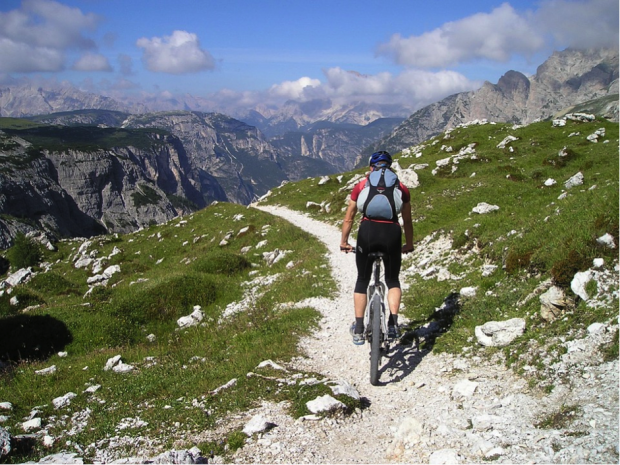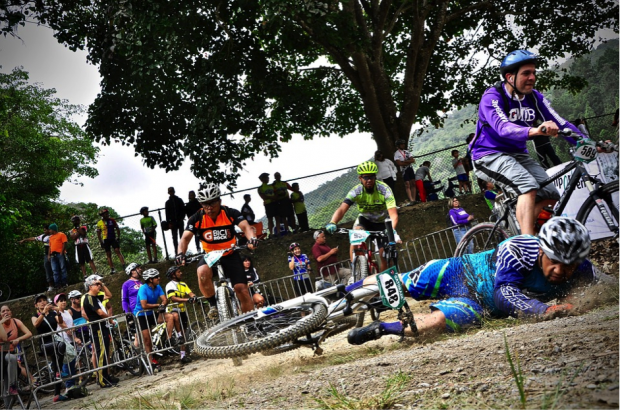Top Tips That Every Mountain Biker Must Know
Mountain biking is a fun and exciting sport. You’ll be filled with adrenaline rush and get to fill your eyes with magnificent views of nature too. It is also beneficial to our health. However, it doesn’t seem as easy as it looks. It takes patience, practice, and tips from the pros to overcome even the most frightening obstacles. So before you hit the trails, here are some tips you might want to take note of first.

Loosen Up
It’s hard to keep your body loose as you hit the trails because of the adrenaline and the pressure of overcoming the obstacles in your way. But, if you keep your body loose, you’ll find it easier to handle your bike.
To do this, lower your chest to the handlebars. This will help keep both of your elbows and shoulders loose, making it easier to steer your bike. And if you need to take a turn, make sure to move your body independently of the bike, so you can increase your speed and easily maneuver turns.
Maintain Momentum
Beginner mountain bikers usually crash because their speed isn’t enough. This happens because they lose their momentum and can’t maintain their balance.
So if you find yourself heading toward a drop, and it’s late to bail, don’t panic and get off the brakes. Instead, let your bike do the work so that you won’t nosedive off the drop.
Shift Early
Many beginners often think that it’s good to shift during the climb. If you’re going to click here, you will see that pros don’t recommend doing this as it could crunch the drivetrain, or worse, it could make your chain fall off. What they do recommend is to shift early before the climb starts instead.
Doing this will give you a much easier and more pleasant pedal until you reach the top. The same goes even when you’re descending.
Set Suspension Correctly
One of the common mistakes of beginner mountain bikers is setting their suspension the wrong way. For many, it’s so easy just to put some air in the shock chambers and turn the rebound knobs to the middle. But apparently, it’s not an ideal way to set it up.
You should actually base it on your weight and riding style. This will help you have better traction when cornering and braking. Additionally, doing this will allow a faster ride on rough roads, be it flat or downhill. It will make a huge difference, so don’t just set your suspension without considering your weight.
Set Your Seat Height
The height of your seat plays an important role too. If it’s too high for you, your lower back will get strained. And if it’s too low, your knees will not like it, and pedaling will be more challenging. Thus, you should know the proper height of a mountain bike seat.
To check if your seat isn’t too high or too low for you, see if your knee is slightly bent when your bike’s pedal is closest to the ground. Don’t worry if both of your feet can’t touch the ground while you’re sitting. It’s normal.

Use The Right Accessories
This should be a given by now, but you should invest in the right accessories for your mountain bike. For starters, the terrain you are going to use your mountain bike on will be rough. It’s best to wear the right protective gear such as a helmet, elbow and knee pads, as well as a cup.
Accidents can happen on the road, so you should stay as protected as possible. These gear won’t stop cuts and bruises, but they do prevent extensive injuries.
While you’re at it, make sure that you have a water bottle holder too. It’s you’re going to need it as hiking certain trails can be exhausting.
Most importantly, make sure that you have both tail and headlights installed on your mountain bike. These precautionary tools make you more visible at night so that other riders – or even cars, don’t collide with you. Headlights also light your path so you can avoid any accidents.
Watch Where You’re Going
This one seems like a no-brainer, yet it’s worth talking about. Many beginner mountain bikers usually like to only look at the path they’re taking because they’re afraid to trip or lose their focus. But it’s more ideal if you’ll keep your eyes looking ahead.
Instead of sticking your eyes to the path you’re taking, look where you want to go. If you’re on a flat path, look straight ahead. If there’s a drop, look at the landing.
Doing this will not only let you see what’s in front of you, but this will help you set your body position, so you can easily control your bike in that direction.
Learn from Others
Many beginners only like to join others who are newbies, too, as they think that joining experienced mountain bikers would be embarrassing.
We’re all beginners at some point. No one was born with prior experience in mountain biking, so there’s nothing to be ashamed of. If you know better than you, ride with them as much as possible, as you can learn more from them than join other newbies.
Don’t force yourself into catching up with other veteran bikers. Go at your own pace, and don’t let the fear of competition get to you. Mountain biking isn’t about who gets to the end of the trail first. It’s about enjoying the view while partaking in a physically challenging activity.
Once you get better and more comfortable using the bike, should you consider kicking it up a notch?
Mountain biking sure is a good sport as it doesn’t only give you an adrenaline rush, but it also allows you to see more of nature. But to be good at it, remember that it takes a lot of patience, practice, and tips from the pros. We hope that our tips are useful to start your learning journey.
